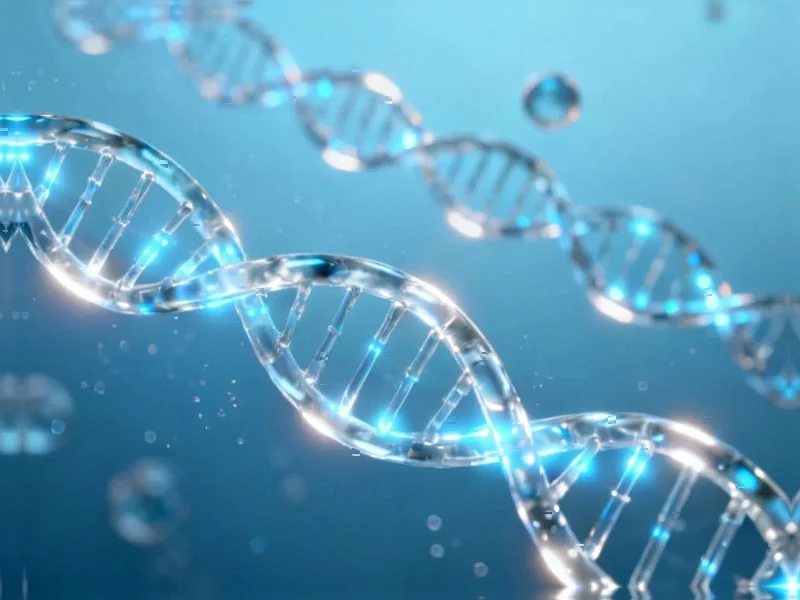According to Phys.org, researchers from the University of Liverpool and the National University of Singapore’s Mechanobiology Institute have discovered that vinculin contains six force-dependent binary switches that function as mechanical memory in cells. Using single-molecule magnetic tweezers to pull on individual vinculin molecules, the team characterized these switches in research published in Science Advances, marking what Professor Ben Goult calls “a fundamental change in how we view this protein.” The findings have immediate implications for understanding dilated cardiomyopathy caused by vinculin mutations and suggest vinculin may play a role in neural information processing through what researchers call the MeshCODE system involving talin. This discovery fundamentally changes our understanding of cellular mechanics and opens new research directions that could transform multiple medical fields.
From Structural Scaffold to Therapeutic Target
The reclassification of vinculin from passive structural component to active mechanical signaling hub represents one of the most significant conceptual shifts in cell biology since the discovery of mechanosensitive ion channels. For decades, drug development targeting cellular adhesion has focused primarily on chemical signaling pathways, but this research suggests mechanical signaling represents an entirely new therapeutic axis. The specific implication for dilated cardiomyopathy is particularly compelling—previously mysterious vinculin mutations may now be understood as disrupting these newly discovered mechanical switches rather than simply compromising structural integrity. This could lead to drugs that specifically target the mechanical rather than chemical properties of these proteins, representing a novel approach to heart failure treatment that bypasses traditional signaling pathways.
The Coming Neuroscience Revolution
Perhaps the most speculative but potentially transformative implication lies in the suggested role of vinculin in neural information processing. The concept of a “MeshCODE” involving vinculin and talin creating a meshwork of binary switches suggests mechanical information storage and processing may operate alongside electrical and chemical signaling in the brain. This could fundamentally reshape our understanding of synaptic plasticity, memory formation, and even consciousness itself. If mechanical switches can store information in neurons, we may be looking at a third layer of neural computation beyond the established electrical and chemical systems. The ongoing collaborations with the Liverpool Interdisciplinary Neuroscience Center and University of Helsinki could potentially uncover mechanical components to learning and memory that current neuroscience models completely overlook.
A New Research Paradigm Emerges
This discovery will force a wholesale reevaluation of how we study cellular mechanics and signaling. The traditional approach of studying proteins in static conditions or through chemical perturbations alone now appears fundamentally inadequate for understanding proteins like vinculin. Research methodologies will need to evolve to incorporate dynamic mechanical stimulation as a standard component of protein characterization. The magnetic tweezers technology used in this study represents just the beginning—we can expect rapid development of new instruments and techniques specifically designed to probe mechanical switching behavior in various cellular contexts. This technological arms race will likely create new market opportunities for biotech instrumentation companies specializing in single-molecule manipulation and measurement.
Beyond Specialized Cells: Universal Implications
While the immediate applications focus on heart disease and neuroscience, the implications of mechanical memory likely extend throughout biology. Cancer metastasis involves cells responding to mechanical cues during invasion and migration—vinculin’s mechanical switches may play crucial roles in these processes. Stem cell differentiation is known to be influenced by substrate stiffness, suggesting mechanical memory could be involved in cell fate decisions. Even immune cell activation and migration may utilize similar mechanical switching mechanisms. The current focus on heart and brain tissues represents just the initial exploration of what may prove to be a universal cellular mechanism with applications across virtually every tissue type and physiological process.
The Emerging Commercial Landscape
This research breakthrough will create ripple effects across multiple biotechnology sectors. Diagnostic companies may develop new tests for mechanical function of vinculin in cardiac patients. Pharmaceutical companies will need to screen for compounds that affect mechanical switching behavior, potentially creating entirely new drug discovery platforms. Medical device companies, particularly those developing mechanical heart supports or neural interfaces, will need to consider how their devices interact with these newly discovered mechanical signaling pathways. The research tools market will see immediate demand for instruments capable of probing mechanical protein behavior, creating opportunities for companies that can commercialize the magnetic tweezers technology or develop more accessible alternatives for broader laboratory use.





Can you be more specific about the content of your article? After reading it, I still have some doubts. Hope you can help me.